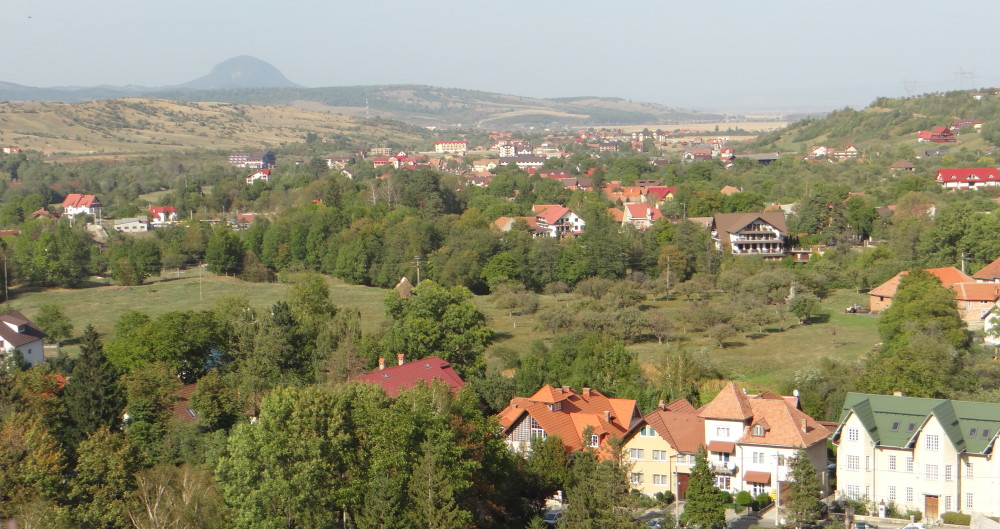
My second grade class, almost 50 years ago
I found a photograph of my second grade classroom with students in dark uniforms, mostly devoid of smiles, with sad and serious faces. It is a depressing moment in time that speaks volumes of the strict disciplinarian code enforced in communist schools.
Children had to stand when called upon to speak, or when asked a question. If they took notes, hands were busy writing. When asked to pay attention to the teacher, they had to keep their hands behind their backs in a very uncomfortable, back-numbing position, leaning against the wooden bench behind. If anybody entered the classroom, the entire student body had to stand and greet them according to rank. The word ‘comrade’ teacher or professor, followed by name, was required to be used at all times.
Modesty and protection of the honor of the classroom, of the school, of the communist party had to be a very important goal of learning. Nobody was allowed to use hateful and insulting language, to exhibit nationalism, superstition, religiousness, or mysticism. If anybody failed in the subject of school discipline, the entire student body was to rebuke that student and take a stance against the offender. Parents were called at school, reprimanded, and embarrassed in front of all the other parents present as inadequate members of the socialist society.
A student’s duty was to come prepared to school every day to answer any questions on that day’s subjects. They were to present, when asked, their Student I.D. Book which contained their entire school history, grades on various subjects, tests, and whether they passed a subject, failed a subject, and what grade they received. This Student I.D. Book (“Carnet de Elev” in Romanian), the size of a passport, had to be presented upon request to any teacher, professor, teacher of behavior (“diriginte”), school director, parent, guardian, and after each notation made inside by school officials. The Student I.D. Book had to be kept clean.
Students had to enter the school quietly, in single file, wearing their uniforms, their matriculation numbers on their sleeves, on hats, and on their chests, hair combed, braided, tied with a white ribbon, wearing black or brown shoes, and white knee highs or heavy-gauge cotton panty hose. No stockings, makeup, shaving, or jewelry were allowed. Each pupil had to occupy their seat immediately and remain seated in silence until the teacher arrived.
Outside and inside the classroom bad and insulting language was forbidden as it was considered hate speech. Students were encouraged to be honest, fair, and courageous in public, in line with the communist party platform. They were to obey traffic signs, respect the elderly, those younger, the handicapped, and lend a hand when asked.
Students were not allowed to attend shows, marches, and public rallies that were not age-appropriate or sanctioned by the school or by the communist party. To ask or answer questions, each student had to raise a hand first; they could not speak unless told to do so.
They were expected to help with domestic chores and care for younger brothers and sisters. A school inspector or teacher would occasionally visit each student’s home to check on their behavior and the family’s habits.
Nobody was allowed to leave the classroom without the teacher’s approval, not even for a bathroom break. During a 4-6 hour school day, two breaks were given, a 10-minute break and a 20-minute break, and no lunch was provided. No students were ever bussed, everyone walked to school alone or in a group of other students.
If too many unexcused absences were recorded, a student was made to repeat the school year. If a student failed a class, he/she also had to repeat the year. If anybody in high school became pregnant, which was quite rare and morally frowned upon, the girl and the father were expelled and forced to finish their education during night school, separate from the more rigorous day schools. There was no daycare provided for out-of-wedlock student moms.
My Student I.D. Book had been lost long time ago, having left it behind when I came to the United States. But I still have my diplomas with the picture of a little girl with pig tails tied with white bows, innocently smiling. It was a time when we believed that everyone on the planet lived the same way we did.
Note
Fortunately, Andreea Lupsor, a young Romanian writer for Historia.ro, found a high school Student I.D. Book from “Liceul Mihai Viteazu” stamped with the school year 1964-1965.
Copyright: Ileana Johnson 2015
ILEANA JOHNSON
American By Choice
